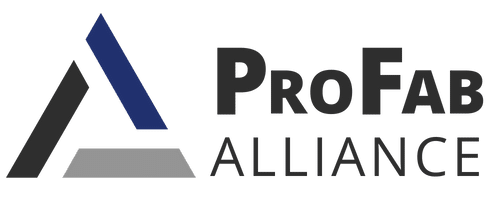How a Single Piece of Paper Can Lead to Strategic Success

Adam Schmitt
Managing Director
In the fast-paced and ever-evolving business landscape, Annual Strategic Planning has become an indispensable tool for organizations aiming to stay competitive and thrive. Why is it that so many small to medium sized organizations neglect this integral part of business. While the process might seem daunting, organization’s don’t have to spend months creating the most elaborate plan. It’s essential to understand that even a basic, rudimentary plan is better than having no plan at all. A simple piece of paper with just a few goals jotted down for the year to remind you every once in a while of your direction will not only help keep you pointed in the right direction, but also help you block so much of the noise. Throughout this article, we will dive into the importance of strategic planning and how taking small steps can lead to significant improvements in organizational success.
The Road Trip

The ProFab Alliance considers strategic planning to be the road map or the directions to your destination for your business with set, specific and measurable goals. Consider before the days of navigation and GPS, if you and your family were going to take a road trip across the country, you would have to plan out your trip. The starting point and the final destination were known and agreed to by all, but you had to think a little bit harder on how you were going to get there. You got out your atlas and started looking at all of the major roads that could take you there. Since it was such a long trip over multiple days, you decide to break the trip up into smaller digestible sections. You stay the night to rest and regroup to tackle the next leg of the journey tomorrow. But, that still wasn’t broken down enough, you had to build in stops for gas, food, and bathroom breaks at the opportune times and locations. By the end of mapping out your journey, you have a fully developed set of directions with checkpoints. This journey will take three days to complete. By following these directions, you will ensure that you will reach your destination on time and eliminate the detours and distractions that will inevitably arise while you are on your journey.
Strategic Planning

Now, let’s flip back to strategic planning. As with your road trip, each person in your organization should know your final destination; this is your Vision. It is your “North Star” and primary reason for existence. Without a Vision you have no clearly articulated direction for your company. Moving past the end destination or Vision, you have your overnight checkpoints, or your strategic goals. These predetermined aspirations should follow the SMART Goal framework or something similar. They must be SPECIFIC in nature to clearly articulate the details. They must be MEASURABLE to ensure you can gauge the progress along the way. They must be ACHIEVABLE in a way that they stretch team members just enough to inspire motivation, but not promote discouragement. They must be RELEVANT to the overall Vision of the organization, and finally, they must be TIME BOUND. Anyone can set goals, but if it lacks realistic timing, chances are you’re not going to succeed. The final portion to our roadtrip is the predetermined stops along the journey. These stops are the specific actions and Key Performance Indicators (KPIs) that help us to move forward and continue the journey in an ideal manner. Overall, this road trip in its entirety can be compared to the Mission Statement of your organization. Just as your road trip planning helped you to arrive at your final destination, an organization’s Mission Statement serves as the “how” you are going to reach your Vision. The strategic planning process serves as an extension of your Mission Statement, but rather frames it in a way that is easier to manage and digest. All of these components must be in alignment to achieve your highest goal.
The Barriers
Now that we are all familiar with the strategic planning process, let’s consider removing all of the barriers to get a plan in place for your organization.
- Stop Being so Short Sighted: Some organizations prioritize short-term gains over long-term planning. This can be due to pressure from investors, a focus on quarterly financial results, or a desire for immediate returns. In such cases, long-term strategic planning may be perceived as time-consuming and less rewarding.
- Overcoming Paralysis by Analysis: One of the common pitfalls in strategic planning is the tendency to overanalyze and seek perfection. However, waiting for the perfect plan can lead to inaction. By embracing the idea that something is better than nothing, organizations can break free from analysis paralysis and take meaningful steps forward. Additionally, strategic planning can be perceived as a complex and overwhelming process, especially for organizations without dedicated planning teams or external support. The fear of getting bogged down in details or making incorrect decisions may lead to avoidance.
- A Mindset of Continuous Improvement: Annual strategic planning doesn’t have to be an all-or-nothing endeavor. Starting with a basic plan allows for iterative improvements over time. As the organization gains insights and experiences, adjustments can be made to the strategy, making it more robust and effective. I remember the first strategic plan that I assisted with. The end result was a one page document with a list of 10 bullet points of things that we wanted to accomplish that year. We checked off about 70% of those bullet points and learned from our failures on the remaining 3. That was 8 years ago. Now through numerous improvements and learning best practices from others, our strategic planning process starts in July for the next year and is composed of a prior year analysis, a hiring plan, capital and maintenance plans, and a full financial pro forma.
- A Shift in your Culture: The act of engaging in annual strategic planning, even at a basic level, helps build a culture of planning within the organization. It encourages a mindset of continuous improvement and a proactive approach to challenges.
- The Results will Far Outweigh the Costs: Limited resources, both in terms of time and money, can deter organizations from engaging in strategic planning. Smaller organizations, in particular, may feel that they lack the manpower or financial means to dedicate to a comprehensive planning process. My suggestion is to start small; test the process for a year and build upon your successes and lessons learned. This will help with limiting the strain on resources, but yet having a shared plan in place to develop the opportunity to grow your resources.
- Break the Mold: Strategic planning often involves changes in processes, structures, or priorities. Organizations that are resistant to change may avoid strategic planning because it requires them to confront and adapt to new ideas, approaches, or market conditions.
- Stop Trying to Control the Market: Some organizations may believe that external factors have a more significant impact on their success than internal planning. While external factors are undoubtedly important, a lack of attention to internal strategy can leave organizations vulnerable to changes in the business environment.
The importance of annual strategic planning cannot be overstated, especially for small to medium sized organizations. It serves as the roadmap, guiding organizations through the dynamic business landscape. While the prospect of creating a perfect plan may seem overwhelming, it’s crucial to remember that something is indeed better than nothing. Taking the first steps, even with a basic plan, sets the stage for improvement and success in the long run. Embrace the power of strategic planning, and watch your organization evolve and thrive in an ever-changing world.



